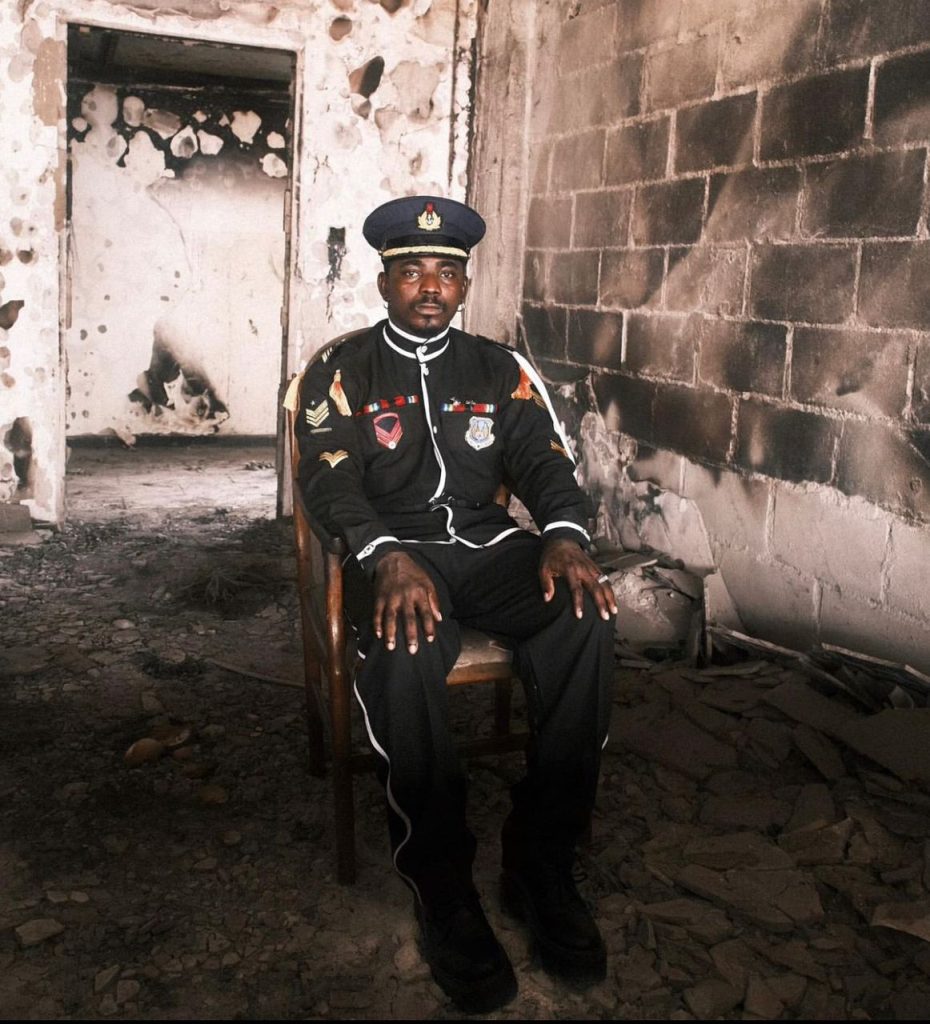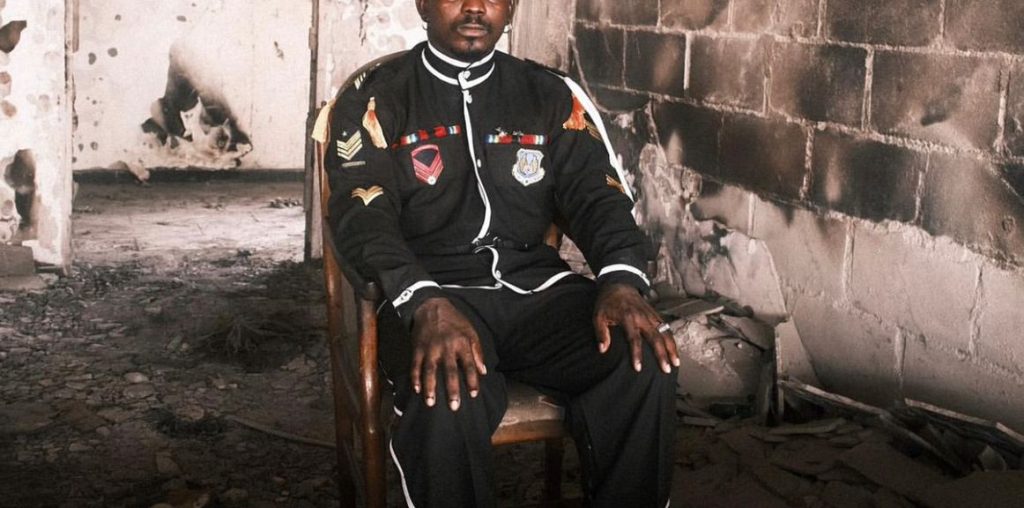
Image source: https://radrafrica.com/llona/
Born Michael Ajuma Attah in the year 1997 (Kogi State, Nigeria). He grew up as a lonely child to a single mother, whose frequent travels had impacted his social life as he rarely gets to make or keep friends. His journey as a musician began with local performances in nearby Kano (northern Nigeria), where he zealously pushes to showcase his talent among his peers in a local community in Kano. Llona initially started his career as a rapper with the name TooClassiq, drawing his inspiration from Olamide who remains one of his greatest influences in the music industry. He was fondly called Olamide by his peers at the start of his career. He eventually gained viral recognition for his freestyles on social media.
Llona’s dedication to sharing his music is as inspiring as his artistry. He relocated to Lagos years later where he began a transformational evolution from a hard-hitting emcee to a soulful vocalist whose therapeutic melodies resonate deeply.
Analysis of “Can’t Breathe”
Llona’s “Can’t Breathe” is a powerful and evocative composition that critically explores the themes of self-realization, self-fulfillment, struggle, resilience and transformation. The song paints a vivid mental picture of his life challenges and struggles as he navigates a complex world marked by distrust and ambition. The lyrics are characterized by strong and intense phrasing with complex words from Nigerian Pidgin, conveying a direct narrative that touches on themes of struggle, loyalty and resilience. The music also contains several examples of the use of intertextuality in a work of art. For instance, in the first stanza:
“A many Casablanca wey e don burst
Too many Kayamanta wey I don trust
Another Ofili Ganga inna stubborn
You fucking with a gangster, and I’m pompous
Amaka Eleganza, she dey form porsh
I spread wide like a cancer, if she wan form, la.”
In the extract above, a reference is made to “Casablanca.” However, the Casablanca alluded to is not the city considered to be the economic and business center of Morocco, but a discrete place in Port Harcourt with no similarities except by name to the Casablanca in Morocco. Port Harcourt’s Casablanca is a place with different functions. In the day, it is a big restaurant that looks normal; but at night, it becomes the apex center that houses all activities of night crawlers. In the music, it is more like a reference to gang life that has come to an end, often in a surprising way.
“Kenyamanta”
“Kenyamanta” in the above extract is a reference to a certain unpopular practice by the female gender in Africa that has to do with a type of traditional sexual prowess or skill with the idea or motive of making a male partner more devoted or loyal. In this context, Llona makes references to this practice as a way to make a strong emphasis on the numerous times he had been betrayed and becomes a prey to these desperate women who had used this medium to enforce a strong commitment to them.
“Ofili Ganga” is a reference to a late Nigerian female actress, who was known for her big body size and headstrong nature. The line “Another Ofili Ganga inna stubborn” implies Llona’s direct comparison of himself to the actress in terms of her willful nature.
“Amaka Eleganza” is a reference to someone who embodies both physical beauty and sophistication and often used to describe someone with a glamorous or stylish presence. In this context, it suggests a portrayal of a certain lifestyle or attitude rather than genuine behaviour.
Themes explored in Llona’s “Can’t Breathe”
The following themes are explored in the music:
1. Survival and Resilience
The music conveys a strong sense of survival, emphasizing the narrator’s determination to navigate a dangerous world. Phrases about not being able to enter this road because of bandit – “and I no fit enter this road ’cause of bandit” reflect the constant threat of violence and the need to remain vigilant or conscious.
2. Distrust and Betrayal
The mention of broken trust and the complexity of relationships suggest a space filled with betrayal. His background as a lonely child to a single mother informs his perspective on relationships and trust while shaping a defensive mindset, making it hard to form genuine connections. His experience of being “left behind” in past interactions also resonates in lines about betrayal and survival, making his journey and music relatable.
3. Identity, Self-Awareness and Independence
The music begins with an acknowledgment of betrayal and distrusts (“Too many Kayamanta wey I don trust”) and progresses to a declaration of independence or separation (“I’m not your homie now”). This progression reflects a journey from vulnerability to empowerment, showcasing how experiences shape identity and resolution. By stating “I’m not your homie now,” the narrator asserts a newfound independence, breaking away from past affiliations. This theme resonates with anyone who has outgrown relationships that no longer align with their values or aspirations in life.
4. Violence and Defense
The imagery of carrying a gun serves as both a literal and metaphorical representation of protection. It highlights the harsh realities of their environment where violence may be necessary for survival, underscoring a life lived on the edge.
5. Ambition and Success
Llona references to winning a Grammy and touring showcase aspirations for success as a contrast to the struggles he face. This theme reflects the desire for recognition and achievement, often seen as a means of escape from their current circumstances.
6. Pressure and Expectations
The feeling of being suffocated—”I can’t breathe”—captures the overwhelming pressure the narrator faces. This could stem from societal expectations, personal goals or the weight of their environment, reflecting the mental strain of striving to succeed.
7. Wealth and Materialism
The mention of lifestyle elements like “Amaka Eleganza” and “living like a party man.” This suggests a pursuit of luxury and status. This theme underscores the allure of material wealth as both a goal and a source of identity. It is often at odds with the struggles depicted throughout the music.
Overall Impact of Llona’s “Can’t Breathe”
The interplay of these themes creates a straight narrative that speaks to the complexities of modern life. This contemporary life echoes environments characterized by both aspiration and adversity. The balance of bravado and vulnerability resonates with listeners, inviting them to reflect on their own experiences. This organized storytelling makes the lyrics not just a reflection of personal struggle but also a commentary on broader societal issues.
Llona… Llona… Llon… Llona…


